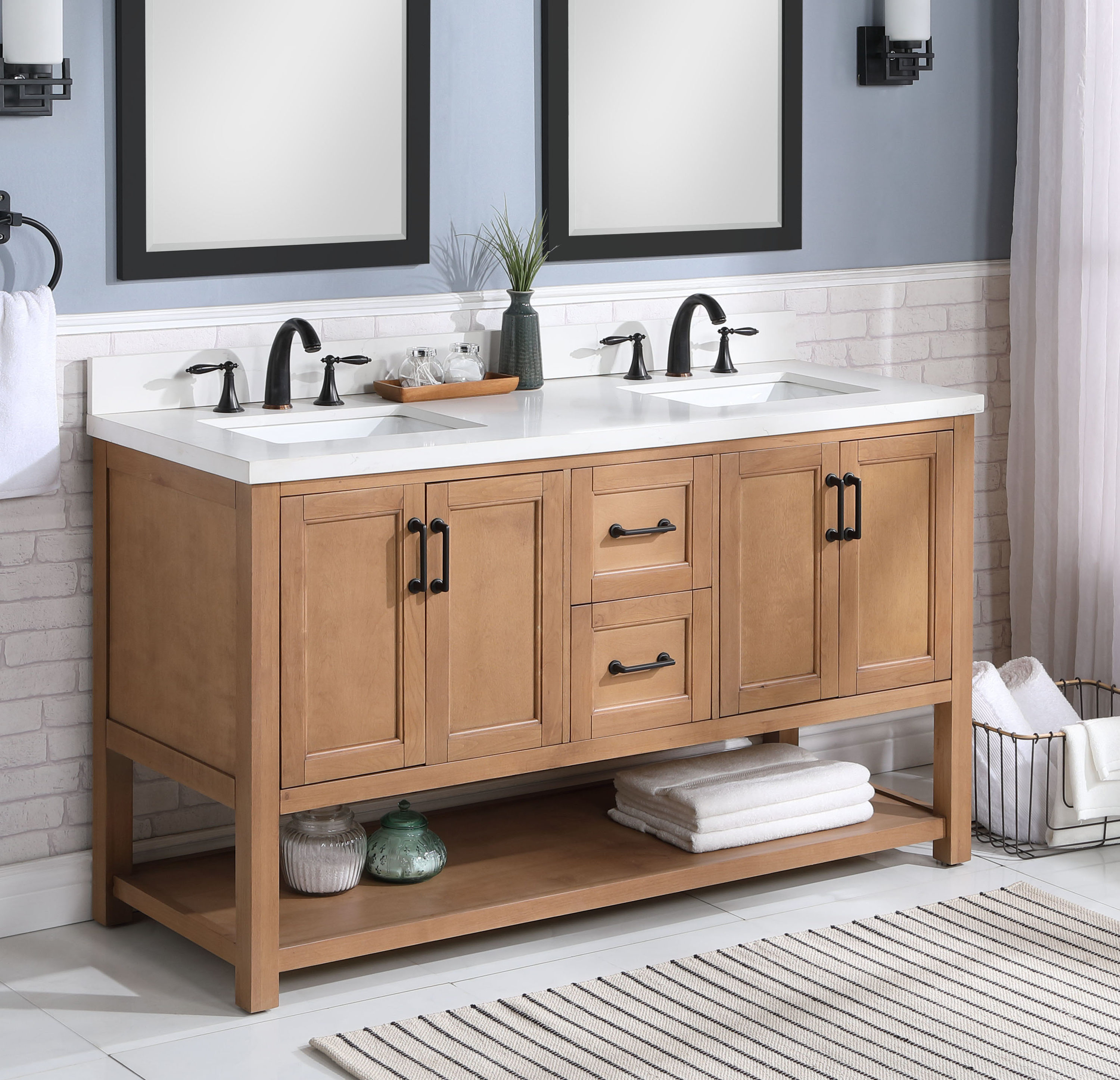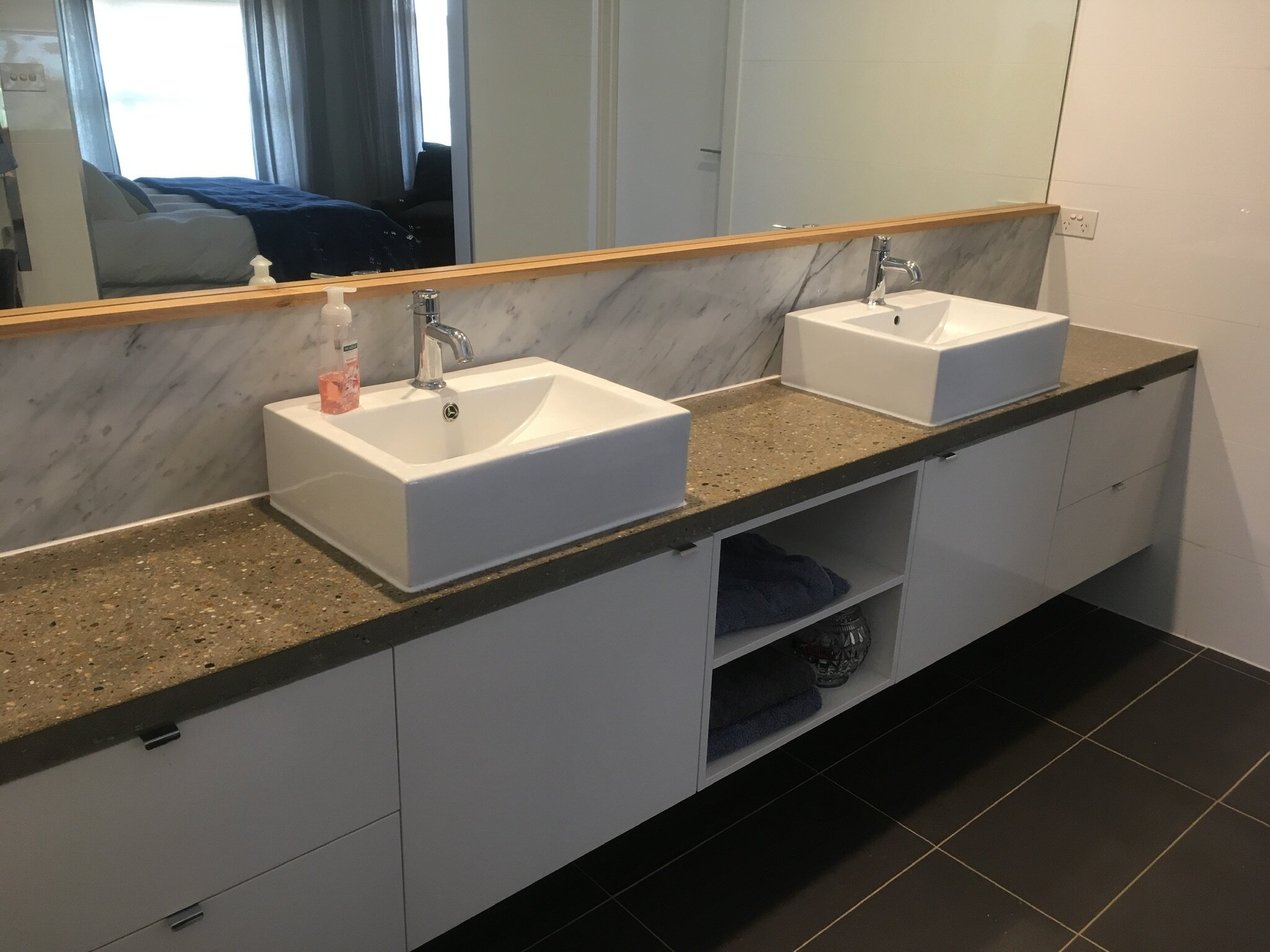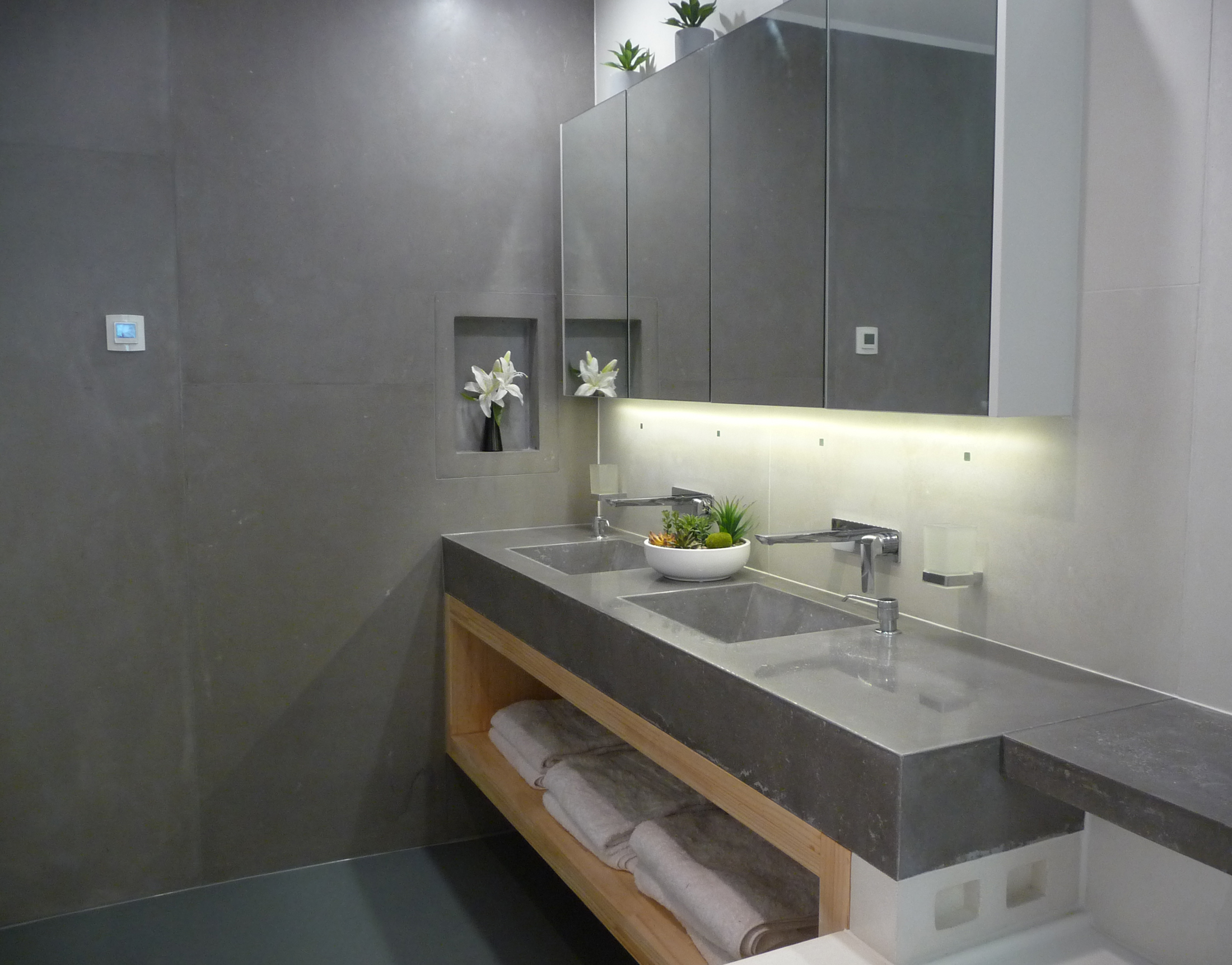Concrete Counter Bathroom Vanity Design Trends

Concrete bathroom vanities are becoming increasingly popular, adding a touch of modern industrial chic to any bathroom. The versatility of concrete allows for a wide range of design possibilities, making it a perfect material for creating unique and personalized bathroom spaces.
Color Palettes and Finishes
Concrete offers a unique palette of colors and finishes, from the classic gray to warm browns and even vibrant hues. The color and finish of the concrete can be customized to match the overall aesthetic of the bathroom.
- Natural Concrete: This finish showcases the raw beauty of concrete, often with subtle variations in color and texture. It’s perfect for minimalist and industrial styles.
- Stained Concrete: Adding pigments to the concrete mixture allows for a wider range of colors, from earthy tones to bold accents. Staining can create a rustic or modern look, depending on the chosen colors.
- Polished Concrete: Polishing the concrete surface creates a smooth, glossy finish that reflects light and adds a touch of elegance. This finish is ideal for contemporary and modern bathroom designs.
Shapes and Styles
Concrete bathroom vanities can be designed in various shapes and styles to complement different bathroom aesthetics.
- Modern: Modern concrete vanities often feature clean lines, geometric shapes, and minimalist designs. They typically have a sleek, polished finish and may incorporate integrated sinks.
- Industrial: Industrial concrete vanities embrace a raw and unfinished aesthetic, often with exposed metal accents and a distressed finish. They can be paired with reclaimed wood elements for a truly industrial look.
- Farmhouse: Farmhouse concrete vanities often feature a more rustic and organic look, with natural wood accents and a distressed finish. They can be paired with farmhouse-style fixtures and accessories for a cozy and welcoming feel.
- Minimalist: Minimalist concrete vanities prioritize simplicity and functionality. They often feature a clean, uncluttered design with a focus on natural materials and subtle details.
Unique Design Features
Concrete bathroom vanities can be further enhanced with unique design features that elevate their aesthetic appeal and functionality.
- Integrated Sinks: Integrated sinks are seamlessly incorporated into the concrete countertop, creating a sleek and modern look. They can be made from various materials, including ceramic, porcelain, and even concrete.
- Open Shelving: Open shelving provides ample storage space while adding a touch of visual interest to the vanity. Concrete shelves can be integrated into the vanity design or added as separate units.
- Decorative Accents: Concrete vanities can be adorned with decorative accents such as metal hardware, wood accents, or even tile inlays. These accents can add a touch of personality and style to the vanity.
Benefits and Considerations of Concrete Bathroom Vanities

Concrete bathroom vanities have gained popularity in recent years, offering a unique blend of modern aesthetics and durability. Their rugged appeal and customization possibilities make them a compelling choice for homeowners seeking a distinctive and long-lasting bathroom fixture. However, before making a decision, it’s essential to weigh the advantages and potential drawbacks of concrete vanities.
Advantages of Concrete Bathroom Vanities
Concrete bathroom vanities offer several advantages, making them an attractive option for homeowners. These benefits include:
- Durability: Concrete is inherently strong and resistant to scratches, dents, and heat. It can withstand the rigors of daily use and resist damage from spills or impacts.
- Water Resistance: Properly sealed concrete is highly resistant to water damage. This makes it an ideal material for a bathroom environment where moisture is prevalent.
- Customization: Concrete is a highly versatile material that allows for extensive customization. Homeowners can choose from a wide range of colors, finishes, and designs to create a vanity that perfectly complements their bathroom decor.
- Unique Style: Concrete vanities offer a distinctive and modern aesthetic that sets them apart from traditional bathroom fixtures. Their raw and industrial look adds a touch of sophistication and personality to any bathroom space.
Potential Drawbacks of Concrete Bathroom Vanities
While concrete vanities offer many advantages, there are also some potential drawbacks to consider:
- Weight: Concrete is a heavy material, which can make installation and moving the vanity more challenging. This is especially important if your bathroom floor is not reinforced to support the weight.
- Maintenance Requirements: Concrete vanities require regular sealing to maintain their water resistance and prevent staining. This involves applying a sealant every few years, depending on the type of sealer and the amount of use.
- Cost: Concrete vanities can be more expensive than traditional vanities made from materials like wood or laminate. The cost can vary depending on the size, design, and complexity of the vanity.
Caring for and Maintaining a Concrete Bathroom Vanity
Proper care and maintenance are essential to ensure the longevity and beauty of your concrete bathroom vanity. Here are some tips for keeping your vanity in top condition:
- Regular Cleaning: Clean your concrete vanity regularly with mild soap and water. Avoid using harsh chemicals or abrasive cleaners, as they can damage the surface.
- Sealing: Seal your concrete vanity every few years to maintain its water resistance and prevent staining. Follow the manufacturer’s instructions for the specific type of sealant used.
- Protect from Heat: Avoid placing hot items directly on the concrete surface, as this can cause discoloration or damage. Use trivets or coasters to protect the vanity from heat.
- Avoid Harsh Chemicals: Avoid using harsh chemicals or abrasive cleaners on your concrete vanity. These can damage the surface and dull its finish.
Concrete Bathroom Vanity Installation and Customization: Concrete Counter Bathroom Vanity

Installing a concrete bathroom vanity is a rewarding DIY project that can add a unique and stylish touch to your bathroom. Whether you’re a seasoned DIYer or a novice, with the right tools and materials, you can achieve a professional-looking result. This section will guide you through the process of installing and customizing your concrete bathroom vanity.
Concrete Bathroom Vanity Installation
Installing a concrete bathroom vanity involves several steps, starting with preparing the area and assembling the vanity base.
- Preparation: Before installing the vanity, ensure you have a level surface to work with. This will ensure the vanity sits properly and prevents potential issues later on. Clean the area where the vanity will be placed to remove any dirt or debris.
- Assembly: Follow the manufacturer’s instructions for assembling the vanity base. This typically involves attaching the legs or base to the vanity top.
- Plumbing: Connect the vanity’s plumbing fixtures to the existing plumbing in your bathroom. This step will require professional assistance if you are unfamiliar with plumbing work.
- Installation: Position the assembled vanity in its designated location and secure it to the wall using appropriate fasteners.
Concrete Bathroom Vanity Customization, Concrete counter bathroom vanity
Once the vanity is installed, you can customize it to your liking. This involves adding paint, stain, or sealant to protect the concrete surface and enhance its appearance.
- Painting: Concrete can be painted with various types of paint, such as acrylic latex paint or epoxy paint. Choose a paint that is specifically designed for concrete surfaces. Prepare the surface by cleaning it with a mild detergent and allowing it to dry completely. Apply the paint in thin coats, allowing each coat to dry before applying the next.
- Staining: Concrete can be stained with acid-based stains or water-based stains. Acid-based stains create a more vibrant and dramatic look, while water-based stains are easier to apply and less likely to cause etching. Before staining, ensure the surface is clean and dry. Apply the stain evenly and allow it to dry completely.
- Sealing: Sealing the concrete surface protects it from water damage and staining. Use a sealant specifically designed for concrete surfaces. Apply the sealant according to the manufacturer’s instructions.
